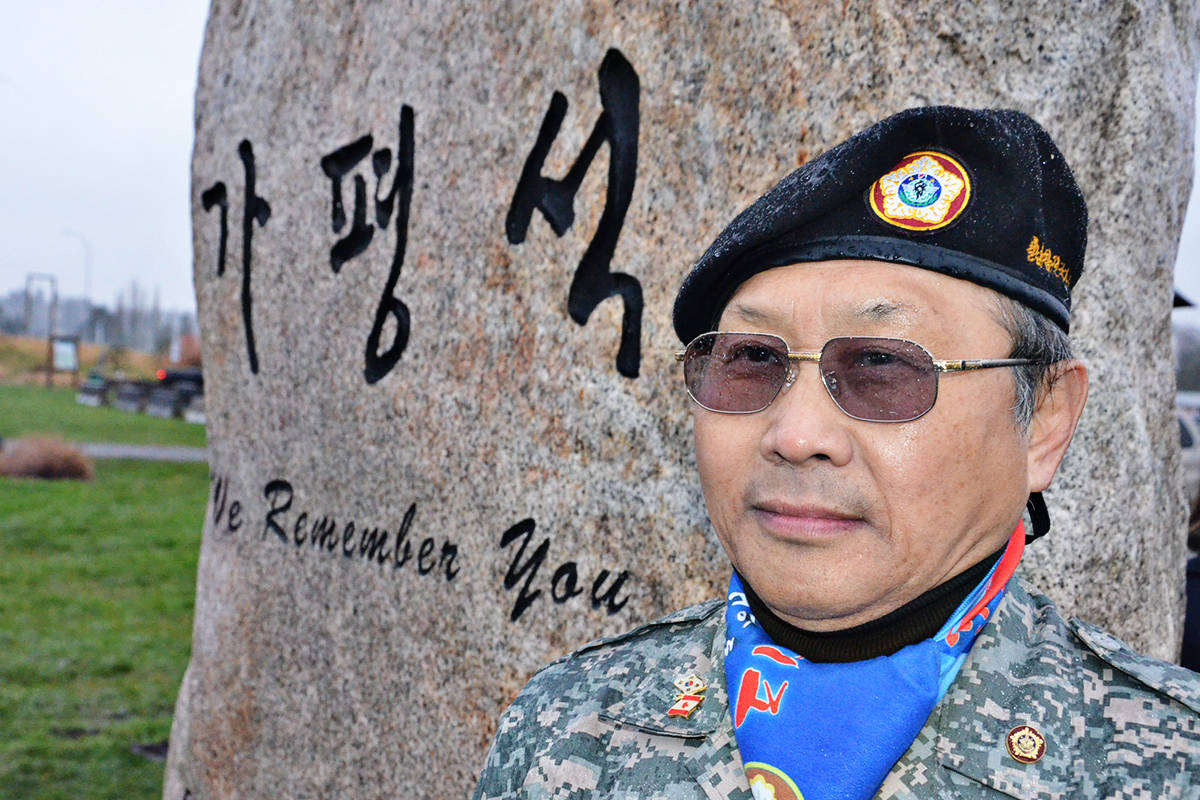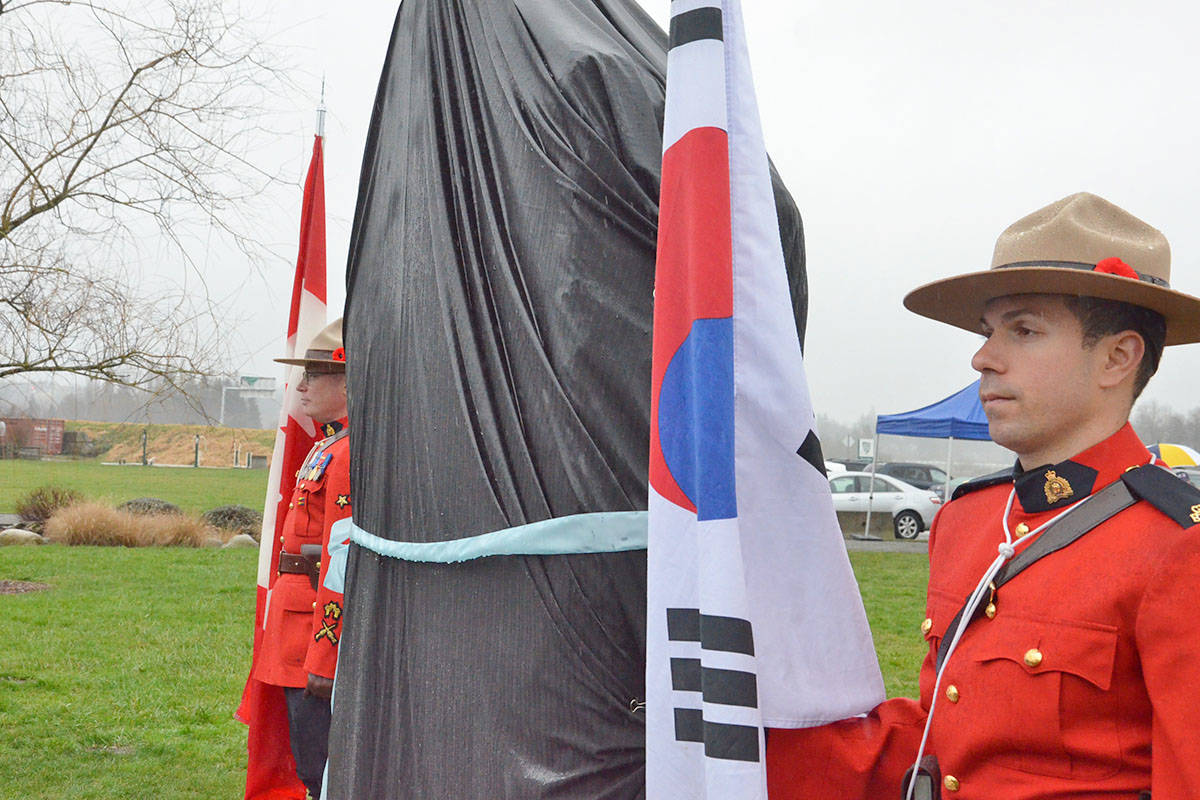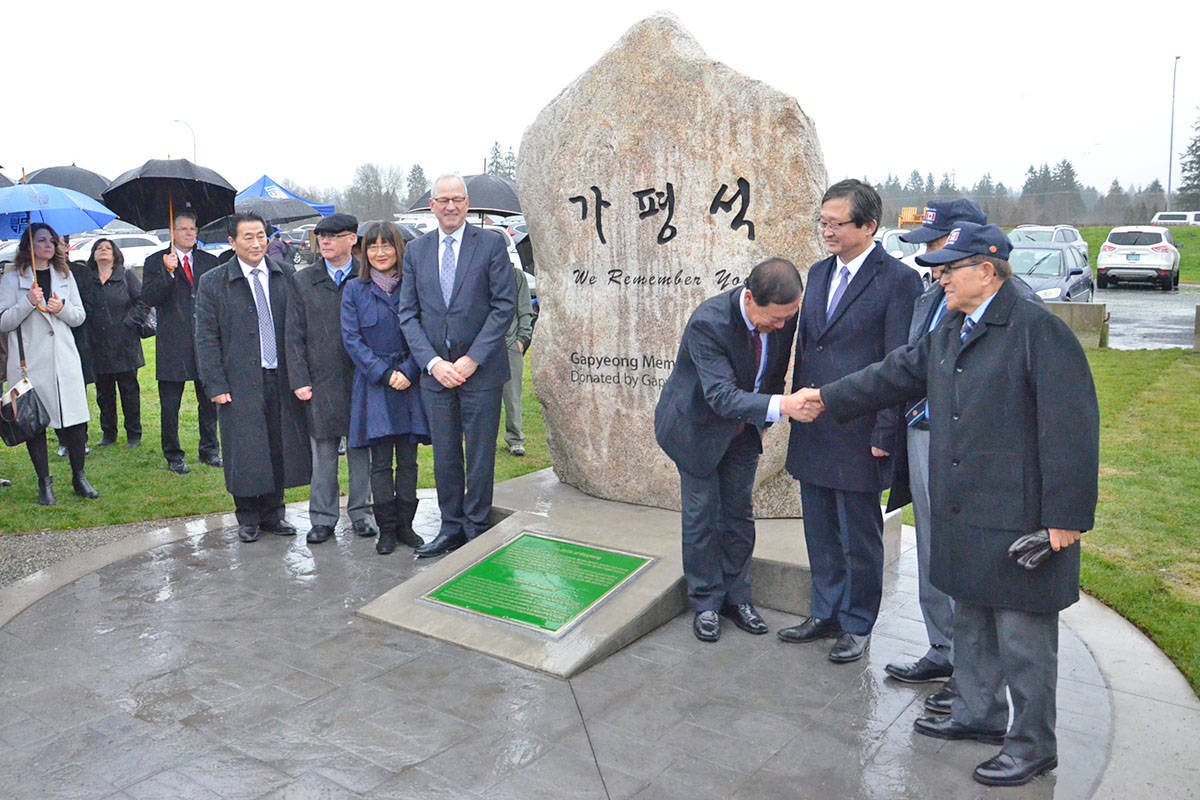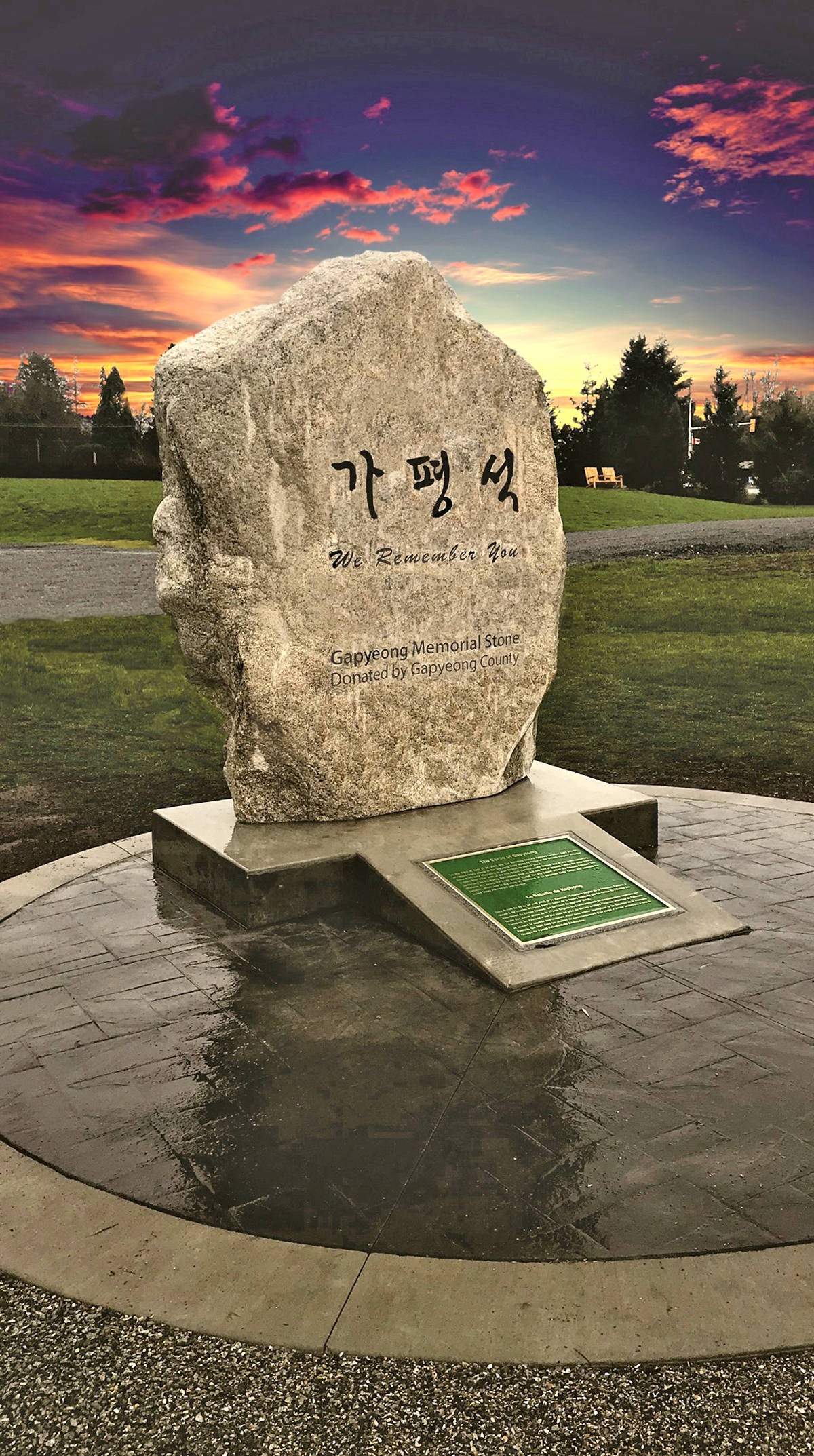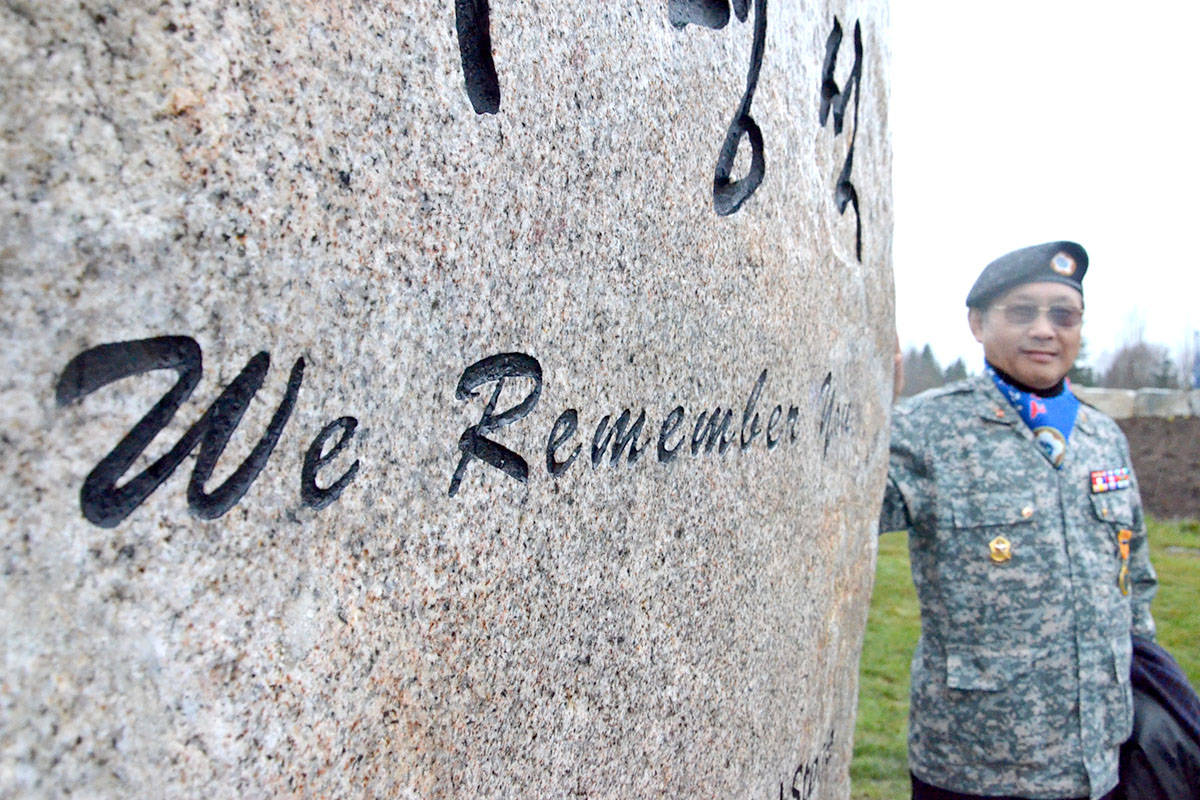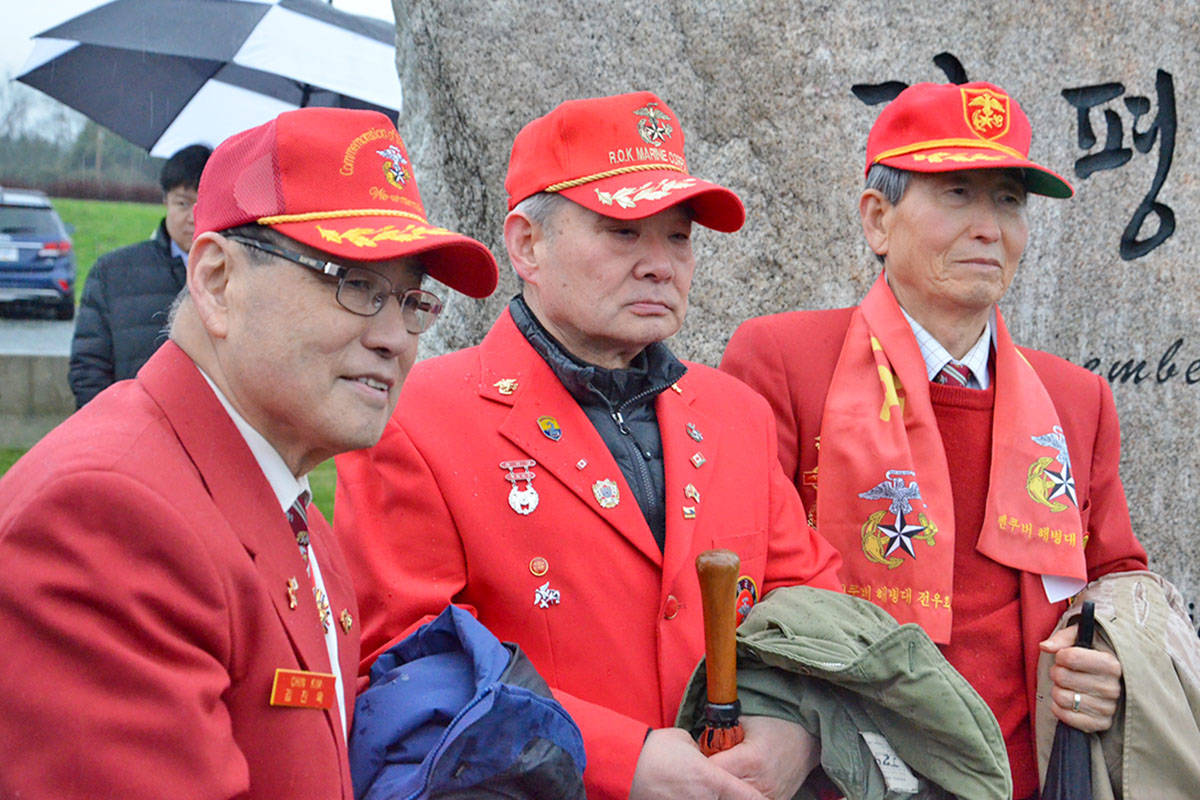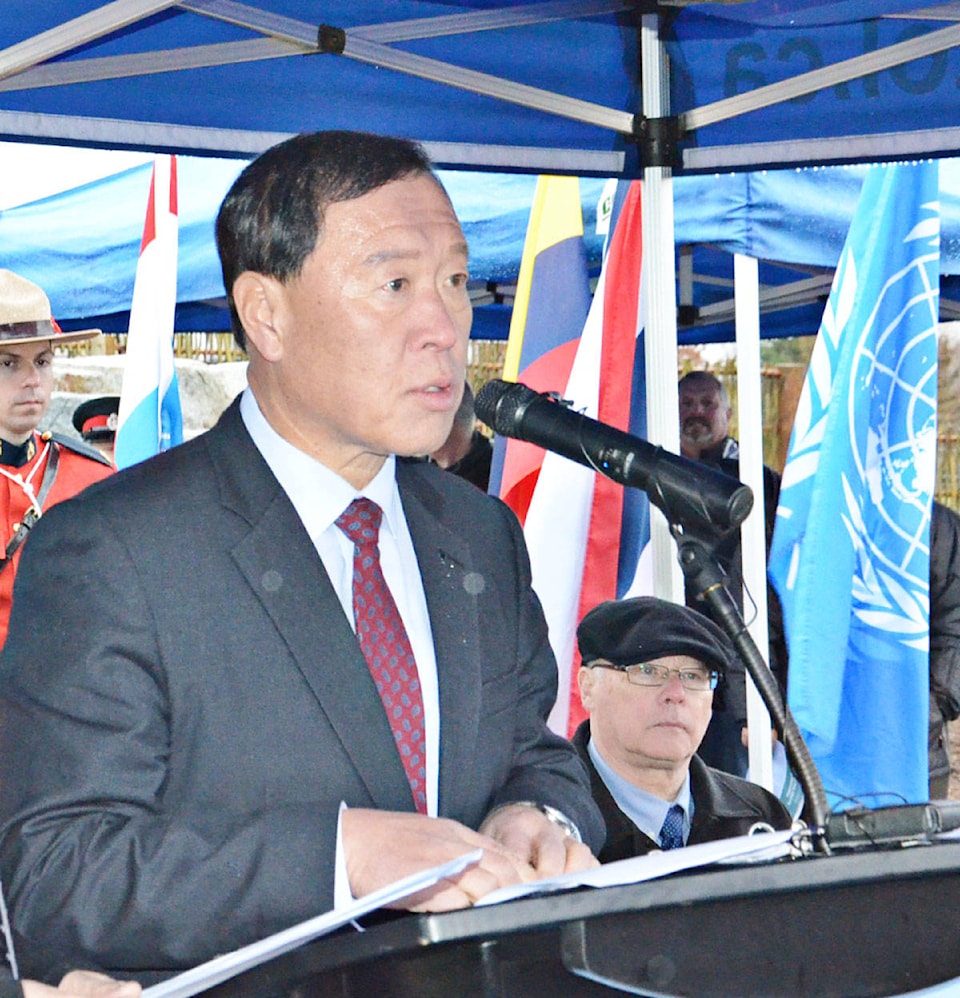The new stone war memorial at the Derek Doubleday Arboretum exists for men such as John Bishop and Ted Adye.
They fought at the Battle of Gapyeong, a key fight that turned the fortunes of war in Korea almost 68 years ago.
“Korea was the third bloodiest conflict Canada has ever been in. It’s not equal to World War 1 or World War II, I know that but it’s often forgotten,” Bishop said.
It was a very different time. The West was fighting against the Communist world and only five years after the Second World War came the Korean War. Canadian soldiers were sent over to fight but there wasn’t the support from the rest of Canadian society, as there had been in the two world ward.
“At the time our Canadian government didn’t pay much attention to it either so therefore the word didn’t get out to people about what was going on, really,” Adye added.
The fact that all these years later, a community of 68,000 people in Korea, as well as the Township, and Korean veterans who now live in Canada wanted to honour the Canadian soldiers touched them.
“It’s unbelievable,” Adye said.
A new stone memorial unveiled at the Derek Doubleday Arboretum on Tuesday marks the contribution Canadian soldiers made to the Korean War during the Battle of Kapyong.
“The Korean War is sometimes called ‘the Forgotten War,’ but we have not forgotten. The people of South Korea have not forgotten,” said Township Mayor Jack Froese. “The Gapyeong Stone will stand as a permanent reminder of the valour shown by the Canadian soldiers and other UN countries who fought for peace and security in that area of the world, and as a symbol of appreciation and goodwill.”
The Korean War was one of Canada’s most significant military engagements of the 20th century. Between 1950 and 1953, Canada served as part of a United Nations multi-national force that protected South Korea from being invaded by Communist North Korea which was backed by Communist China. More than 26,000 Canadians were involved in the conflict. Of them, more than 1,500 were injured and 516 gave their lives for the cause.
The pivotal Battle of Kapyong started on April 23, 1951, and lasted for two days, about 60 kilometres northeast of Seoul.
The United Nations’ force had been outnumbered by the Communist Chinese Army by a factor of five, but about 650 troops from the 2nd Battalion Princess Patricia’s Canadian Light Infantry (PPCLI) and the 3rd Battalion, Royal Australian Regiment, held off an entire Chinese division, preventing the capture of the South Korean capital of Seoul and marking a turning point in the war.
Donation of the memorial was facilitated by the Gapyeong Stone Committee, made up of members of the Korea Veterans Association of Canada, the Korean War Veterans Association, the Korean Veterans Association, and the Vietnam War Veterans Association.
When it came time to decide on the material for the war memorial, it was only natural to look to the Kapyong region (the western spelling of the Korean name Gapyeong).
The stone was quarried in Gapyeong, and the memorial now sits in the Arboretum, joining the community’s other significant war memorials. The arboretum is home to the treed Walk to Remember and commemorative structure for soldiers who fell in Afghanistan, as well as an oak tree grown from an acorn from Vimy Ridge.
Veterans came from around B.C. to take part in the unveiling.
Gapyeong Mayor Kim Sungki spoke of how the legacy of Canadians helping to defeat Communism in his country allowed the nation to develop and prosper in the years since.
“The Canadian soldiers sustained heavy casualities,” he said, through a translator. “The battle of Gapyeong is regarded as a glorious and honoured comeback in the history of the Canadian forces.”
He added: “We will remember your sacrifcies and dedication and that Korea’s development is all because of you.”
